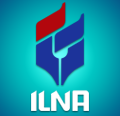Higher education degraded in Iran’s labor market

A recent research showed higher education raises an Iranian individual’s odds of remaining unemployed by 48%Some 50% of employed women in rural areas and 44% of women in urban areas dropped out of the labor force in the past three years
According to financialtribune, a dvocates of higher education have long argued its role in helping job-seekers earn more money and find a job.
However, a recent research presented at the Second Conference on Iranian Economy in Tehran in mid-December, published in the Persian daily Donya-e-Eqtesad, suggests otherwise, at least in Iran. It declared that higher education raises an Iranian individual’s odds of remaining unemployed by 48%.
Individuals who did not have a university degree were more likely to find a job in Iran over the past three years, or as the report says, their chances of remaining jobless were less than 20% against 48% for university-educated people.
Educated women had even a slimmer chance of landing a job; an urban educated woman is more than 56% likely to remain unemployed while the odds of unemployment for an educated woman living in rural areas were 62%.
Only 23% of employed people in Iran were university graduates in the second quarter of the current fiscal year (June 22-Sept. 22, 2017).
This is while degree holders made up almost half of unemployed population in Q2. The figures are again worse for women, as around 70% of unemployed women had higher education.
The study also provides data on the percentage of employed population who left the labor force after some time.
Some 50% of employed women in rural areas and 44% of women in urban areas dropped out of the labor force in the past three years. The ratio is lower for urban and rural men, i.e. less than 10%, suggesting that Iranian women stay in the labor market for a short period and their job experience is limited.
Growth in unemployment rate is directly related to the increase in labor force participation rate—the proportion of those who are 10 years and older that is economically active (either employed or looking for work).
Although an average of 650,000 jobs were added to the economy annually over the past three years, the size of unemployed population increased by 350,000, indicating that the labor force participation rate grew by one million people.
Some regions of the country have a far higher unemployment rate than others. Unemployment rates for the first two quarters of the current Iranian year (March 2017-18) by province for educated men and women prove this claim.
The unemployment rate among university-educated young women in Kurdestan, Kermanshah and Kerman hovers near 80%. The same rate is 70% in Chaharmahal-Bakhtiari, Ilam, Kohgilouyeh-Boyerahmad and Khuzestan.
The lowest unemployment rate among university-educated young women has been registered for Qazvin and Hormozgan with less than 35%.
Tehran Province, wherein lies the capital city, has a 41% rate, the research said.
Similar Parliamentary Report
A report by the research arm of the Iranian Parliament published on Dec. 20 echoed similar findings for different time spans.
Men and women labor force participation rates in the fiscal 2005-6 were 65% and 20%, respectively; whereas, in 2016-17, 64% of men and 14.9% of women participated in the labor force. Despite their low participation rates, the percentage of unemployed women was higher than that of men, the parliamentary report said.
Iran’s economic performance during 2005-14 was affected by the absence of jobs and that coincided with an increase in the population of young people. Those between 15 and 34 years constituted more than 40% of the population in those years—an unprecedented proportion suggesting a growing need to create more jobs not only for years to come, but also to compensate for some of the shortcomings of past policies.
Official data also show part-time employment rates during 2005-16 ranged from 6% to 10.3%. The interesting point is that the difference between part-time employment of women living in urban and rural areas is minimal whereas rural men are by far more engaged in part-time jobs than their urban counterparts.
Moreover, part-time employment is higher among the youth than in other age groups.
Unemployment rates are markedly different and alarmingly high among young people, women and educated women, particularly in western provinces. In some of these provinces, youth unemployment rates range from 50-63% and educated women’s unemployment rates in the same provinces fluctuate between 63-78%.
The report also looks at estimations of disguised unemployment in Iran. Disguised unemployment exists where a segment of the labor force is either without work or is working in a redundant manner where worker productivity is essentially zero. This type of unemployment does not affect the aggregate output.
An economy demonstrates disguised unemployment when productivity is low and too many workers are filling too few jobs. Iran’s disguised unemployment in 2016-17 was estimated to be about 22.5%, nearly 10% more than the official unemployment rate.
Out of 3.2 million jobless people in 2016-17, more than 1.3 million or 42% of the unemployed population held university degrees. This comes as only 24% of jobholders in the same year were university graduates. This is a clear indication of imbalance between supply and demand for the educated workforce.
There is also a huge mismatch between the level of education and available jobs, which has resulted in the unemployment of educated workforce, particularly among women.
In 2005-06, 22% of employed women held university degrees, which figure rose to 41% in 2016-17. On the other hand, the share of degree holders in unemployed population rose to 72% in 2016-17 from 36% in 2005-06.
END
